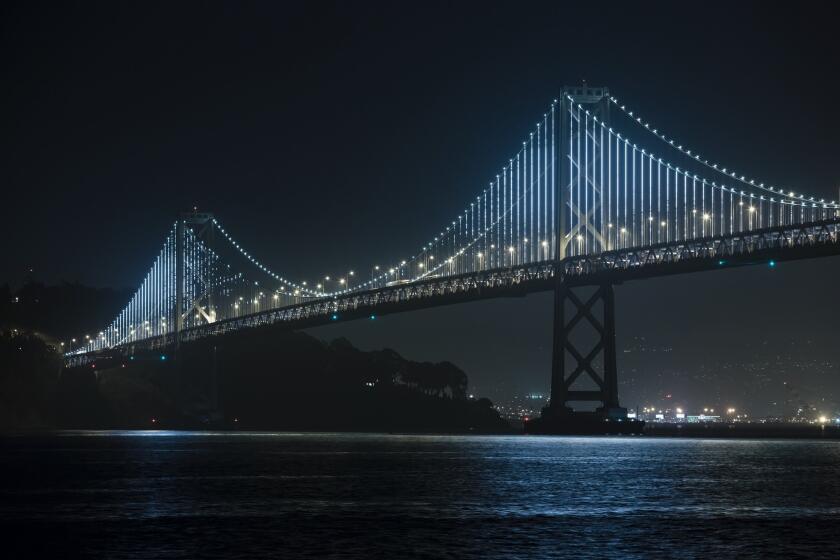EPA Rejects Pleas of Lab Neighbors
Despite pleas from neighbors and activists that they have a “moral authority” to maintain oversight, officials with the federal Environmental Protection Agency said they have neither the money nor the jurisdictional power to direct radiological cleanup operations at Rocketdyne’s Santa Susana Field Laboratory.
At a meeting Wednesday night attended by about 50 neighbors of the former nuclear research facility near Simi Valley, EPA officials reiterated their recent announcement that they plan to scale back monitoring of the cleanup, which is scheduled to be completed in 2007. The agency believes cleanup operations are inconsistent with federal environmental regulations and therefore the property is unsuitable for development.
But EPA officials reminded residents that their role has been merely as an oversight panel and that the Department of Energy, which was responsible for nuclear research at the lab, has final regulatory authority.
“We’ve tried valiantly, given our limited authority ... we’ve done all that we’ve been asked to do” in terms of offering advice and expert opinions, said Arlene Kabei, associate director of waste management in the San Francisco EPA office. “Over the last 10 years, there has been the expectation that we were going to do something about [the contaminants] and we can’t, because we’ve never had the authority.”
The EPA was asked by government officials and neighbors of the lab to independently review the Department of Energy’s radiological cleanup and has served as lead agency over the Santa Susana Field Laboratory work group -- a citizens panel -- since it was formed in 1991.
Despite the EPA’s suggestion that the Department of Energy take control of the work group, no Energy Department officials attended a Thursday morning meeting during which the future of the panel was discussed.
“This is indeed a setback, but you have those along the way,” said Tom Pfeifer, a spokesman for Rep. Elton Gallegly (R-Simi Valley), who established the group. “We will continue to work just as hard as we have for the past 13 years to ensure the Santa Susana Field Lab is cleaned up completely.”
The EPA’s decision to take a less-active role in the cleanup, in part because of budget limitations, was criticized by several of those who attended the work group’s meeting Wednesday night.
“I know how frustrating it is, but you can’t ... leave us in [the Energy Department’s] hands,” said Oak Park resident Sue Boecker. “This work group is probably the only vehicle we have to get full public information about the problem.”
Work group member Dan Hirsch, president of the anti-nuclear group Committee to Bridge the Gap, said he would continue to push to keep the EPA involved as a watchdog over the Department of Energy, which commissioned nuclear research at the lab for decades beginning in the early 1950s.
“EPA is the agency with the moral authority to uphold the environmental laws of this country, and the DOE is a self-regulatory agency that has shown it can’t be trusted,” Hirsch said, citing a 1959 partial fuel meltdown at Santa Susana that went undisclosed for two decades. “If we lose you, we lose one of the few things that can help protect this community.”
Jonathan Parfrey, a work group member and director of the Southern California chapter of Physicians for Social Responsibility, said Thursday that some members were adamant that the lab site never be used for residences.
“For us, it’s nonnegotiable. We would never stand for the development of that land for housing,” he said. “I can’t imagine it being suitable for any human habitation whatsoever.”
Energy Department officials told the audience Wednesday that the existing radioactive contamination at the lab posed no threat to workers or nearby communities and that plans to remove about 7,500 cubic meters of soil and debris from the site would leave the land essentially as clean as it would be under the EPA methodology, which calls for up to 407,000 cubic meters of dirt to be removed.
“Over the whole site, the level of risk is close to two in a million” in increased cancer occurrences once the cleanup is completed, said Department of Energy spokesman Roger Gee. That level is practically indistinguishable from the EPA’s Superfund risk standard of one in a million, he said.
“We don’t disagree on what’s safe. We disagree on the process,” he said, adding that the department would conduct a final survey of radiological contamination at the site after its cleanup was complete to ensure no problem areas remained.
More to Read
Start your day right
Sign up for Essential California for news, features and recommendations from the L.A. Times and beyond in your inbox six days a week.
You may occasionally receive promotional content from the Los Angeles Times.






